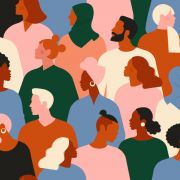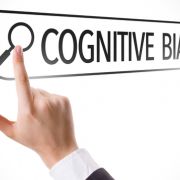Bias (original) (raw)

Cognitive Biases, Discrimination, Heuristics, Prejudice, Stereotypes, Racism, Sexism, Self-Serving Bias, Actor/Observer Bias, Change Bias
Reviewed by Psychology Today Staff
A bias is a tendency, inclination, or prejudice toward or against something or someone. Some biases are positive and helpful—like choosing to only eat foods that are considered healthy or staying away from someone who has knowingly caused harm. But biases are often based on stereotypes, rather than actual knowledge of an individual or circumstance. Whether positive or negative, such cognitive shortcuts can result in prejudgments that lead to rash decisions or discriminatory practices.
Contents
Bias and Stereotyping

Bias is often characterized as stereotypes about people based on the group to which they belong and/or based on an immutable physical characteristic they possess, such as their gender, ethnicity, or sexual orientation. This type of bias can have harmful real-world outcomes. People may or may not be aware that they hold these biases.
The phenomenon of implicit bias refers to societal input that escapes conscious detection. Paying attention to helpful biases—while keeping negative, prejudicial, or accidental biases in check—requires a delicate balance between self-protection and empathy for others.
Bias is a natural inclination for or against an idea, object, group, or individual. It is often learned and is highly dependent on variables like a person’s socioeconomic status, race, ethnicity, educational background, etc. At the individual level, bias can negatively impact someone’s personal and professional relationships; at a societal level, it can lead to unfair persecution of a group, such as the Holocaust and slavery.
What causes people to be biased?
Starting at a young age, people will discriminate between those who are like them, their “ingroup,” and those who are not like them, “their outgroup.” On the plus side, they can gain a sense of identity and safety. However, taken to the extreme, this categorization can foster an “us-versus-them” mentality and lead to harmful prejudice.
People are naturally biased—they like certain things and dislike others, often without being fully conscious of their prejudice. Bias is acquired at a young age, often as a result of one’s upbringing. This unconscious bias becomes problematic when it causes an individual or a group to treat others poorly as a result of their gender, ethnicity, race, or other factors.
Can a person be unbiased?
Generally, no. Everyone has some degree of bias. It’s human nature to assign judgment based on first impressions. Also, most people have a lifetime of conditioning by schools, religious institutions, their families of origin, and the media. However, by reflecting critically on judgments and being aware of blind spots, individuals can avoid stereotyping and acting on harmful prejudice.
Telling people to “suppress prejudice” or racism often has the opposite effect. When people are trained to notice prejudiced or racist thoughts without trying to push them away, they are able to make a deliberate choice about how they behave towards others as a result. This can lead to less discrimination and reduced bias over time.
Biases and Cognitive Errors

A category of biases, known as cognitive biases, are repeated patterns of thinking that can lead to inaccurate or unreasonable conclusions. Cognitive biases may help people make quicker decisions, but those decisions aren’t always accurate. Some common reasons why include flawed memory, scarce attention, natural limits on the brain’s ability to process information, emotional input, social pressures, and even aging. When assessing research—or even one's own thoughts and behaviors—it’s important to be aware of cognitive biases and attempt to counter their effects whenever possible.
What is actor-observer bias?
When you are the actor, you are more likely to see your actions as a result of external and situational factors. Whereas, when you are observing other people, you are more likely to perceive their actions as based on internal factors (like overall disposition). This can lead to magical thinking and a lack of self-awareness.
People tend to jump at the first available piece of information and unconsciously use it to “anchor” their decision-making process, even when the information is incorrect or prejudiced. This can lead to skewed judgment and poor decision-making, especially when they don’t take the time to reason through their options.
What is attribution bias?
Attribution bias occurs when someone tries to attribute reasons or motivations to the actions of others without concrete evidence to support such assumptions.
Confirmation bias refers to the brain’s tendency to search for and focus on information that supports what someone already believes, while ignoring facts that go against those beliefs, despite their relevance.
What is the curse of knowledge and hindsight bias?
People with hindsight bias believe they should have anticipated certain outcomes, which might only be obvious now with the benefit of more knowledge and perspective. They may forget that at the time of the event, much of the information needed simply wasn’t available. They may also make unfair assumptions that other people share their experiences and expect them to come to the same conclusions.
In the Dunning-Kruger Effect, people lack the self-awareness to accurately assess their skills. They often wind up overestimating their knowledge or ability. For example, it’s not uncommon to think you’re smarter, kinder, or better at managing others than the average person.
People are more likely to attribute someone else’s actions to their personality rather than taking into account the situation they are facing. However, they rarely make this Fundamental Attribution Error when analyzing their own behavior.
The Halo Effect occurs when your positive first impression of someone colors your overall perception of them. For example, if you are struck by how beautiful someone is, you might assume they have other positive traits, like being wise or smart or brave. A negative impression, on the first hand, can lead you to assume the worst about a person, resulting in a “Reverse Halo” or “Horns Effect.”
What is the negativity bias?
People like to win, but they hate losing more. So they tend to pay more attention to negative outcomes and weigh them more heavily than positive ones when considering a decision. This negativity bias explains why we focus more on upsetting evens, and why the news seems so dire most of the time.
People tend to overestimate the likelihood of positive outcomes when they are in a good mood. Conversely, when they are feeling down, they are more likely to expect negative outcomes. In both instances, powerful emotions are driving irrational thinking.
What is the Sunk Cost Fallacy?
Have you ever heard, “Don’t throw good money after bad”? That expression is based on the Sunk Cost Fallacy. Basically, when someone is aware of the time, effort, and emotional cost that’s already gone into an endeavor, they can find it difficult to change their mind or quit a longtime goal—even when it’s the healthiest choice for them.
When healthcare providers devalue the pain of marginalized people, it results in inadequate and sometimes life-threatening care.
Maternal experiences of racism were associated with stronger brain connectivity in newborns in functional networks linked to fear and vigilance.
Cultural and institutional forces often pressure individuals to choose parenthood—and the field of psychotherapy is no exception.
Beating this bias—and you can do this with attention, effort, and the right tactics—helps you choose the candidate most likely to do what you want.
Do you think you know? The Dunning-Kruger effect may be tricking you. Learn how to spot overconfidence and stay curious to keep growing.
Do you think you know? The Dunning-Kruger effect may be tricking you. Learn how to spot overconfidence and stay curious to keep growing.
For decades, spirometry tests have classified lung function differently for Black and White patients. New research explains the racism behind it.
For decades, spirometry tests have classified lung function differently for Black and White patients. New research explains the racism behind it.
The topics of "misinformation" and "disinformation" are undergoing considerable public dialog and debate. Polls and election results provide insights into facts and fact finding.
The topics of "misinformation" and "disinformation" are undergoing considerable public dialog and debate. Polls and election results provide insights into facts and fact finding.
Understanding some key dimensions of disability helps us better appreciate how society impacts the experiences of disabled people.
Understanding some key dimensions of disability helps us better appreciate how society impacts the experiences of disabled people.
In hard times, feminist women and allies need supportive communities. Setting boundaries, fostering resilience, and nurturing allyship are vital for collective, lasting change.
In hard times, feminist women and allies need supportive communities. Setting boundaries, fostering resilience, and nurturing allyship are vital for collective, lasting change.
Polarization is self-reinforcing as it breeds distrust. We’re prone to accept information as truthful only if we trust the persons or media imparting it.
Polarization is self-reinforcing as it breeds distrust. We’re prone to accept information as truthful only if we trust the persons or media imparting it.
You've seen the effects of echo chambers: political divides, social bubbles, and the constant reinforcement of familiar ideas. What keeps us trapped in these bubbles?
You've seen the effects of echo chambers: political divides, social bubbles, and the constant reinforcement of familiar ideas. What keeps us trapped in these bubbles?
When individuals, communities, and organizations commit to reducing weight stigma, we can create a society where everyone can feel valued and respected.
When individuals, communities, and organizations commit to reducing weight stigma, we can create a society where everyone can feel valued and respected.
It is problematic to frame DEI as the cause of this backlash or that its divisiveness indicates malevolence.
It is problematic to frame DEI as the cause of this backlash or that its divisiveness indicates malevolence.
Anonymizing resumés in a recruitment process does not ensure fairness when hiring decisions hinge on in-person interviews. The problem may now be solvable with virtual reality.
Anonymizing resumés in a recruitment process does not ensure fairness when hiring decisions hinge on in-person interviews. The problem may now be solvable with virtual reality.













